Author: Mario @IOSG
Background Introduction
Prediction Markets are a type of speculative market that trades based on the outcomes of future events, with the core function of aggregating dispersed information through contract prices. Under specific conditions, the price of a contract can be interpreted as a probability forecast for the occurrence of that event. Since the 1980s, extensive research has shown that prediction markets have a very high accuracy, often outperforming traditional forecasting methods such as polls or expert opinions. This predictive ability stems from the "wisdom of crowds": anyone can participate in the market, and traders with better information have economic incentives to engage in trading, thereby pushing prices closer to the true probabilities. In short, a well-designed prediction market can efficiently integrate the beliefs of many individuals into a consensus estimate of future outcomes.
The origins of modern prediction markets can be traced back to some pioneering experiments in the late 1980s. The first academic prediction market, the Iowa Electronic Markets (IEM), was established in 1988 at the University of Iowa.

IEM is a small-scale real-money market (with individual betting amounts regulated to about $500), primarily focused on the outcomes of U.S. elections. Despite its limited scale, IEM has consistently demonstrated impressive predictive accuracy over the years. In the week leading up to the election, the market predicted the vote shares of Democratic and Republican candidates with an average absolute error of 1.5 percentage points, compared to a 2.1 percentage point error in the final Gallup poll during the same period. The following chart also shows that as election day approaches and more information is absorbed by the market, predictive accuracy continues to improve.
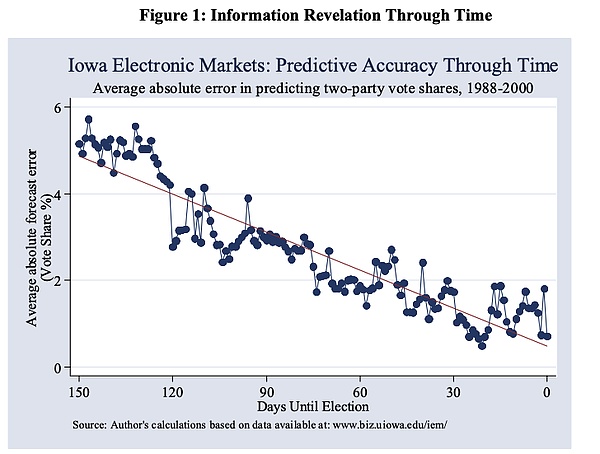
At the same time, some forward-looking ideas about using markets to predict uncertain events were gradually taking shape. Economist Robin Hanson proposed the concept of "Idea Futures" in 1990, which involves establishing an institution where people can bet on scientific or social propositions. He believed this could form a "visible expert consensus" and incentivize honest contributions by rewarding accurate predictions and punishing incorrect judgments. Essentially, he viewed prediction markets as a mechanism to counter biases and promote truth revelation, applicable in fields such as scientific research and public policy. This concept (i.e., "idea futures market") was very ahead of its time and laid the groundwork for the theoretical expansion of prediction markets.
Entering the 1990s, some online prediction markets began to emerge, covering both real-money markets and "virtual currency" markets. The academic market at the University of Iowa continued to operate, while "virtual currency" markets gained more attention among the public. For example, the Hollywood Stock Exchange (HSX) was established in 1996 as an entertainment prediction market trading "shares" of movies and actors using virtual currency.
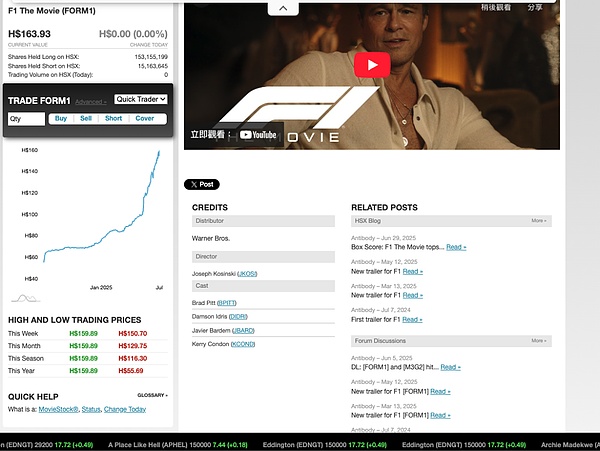
HSX has proven to be very adept at predicting box office performance during a movie's opening weekend and even the Oscars, sometimes achieving accuracy that surpasses professional film critics. In 2007, HSX players accurately predicted 32 out of 39 Oscar nominations and hit 7 out of 8 winners in the major categories. HSX is regarded as a classic case of a prediction market.
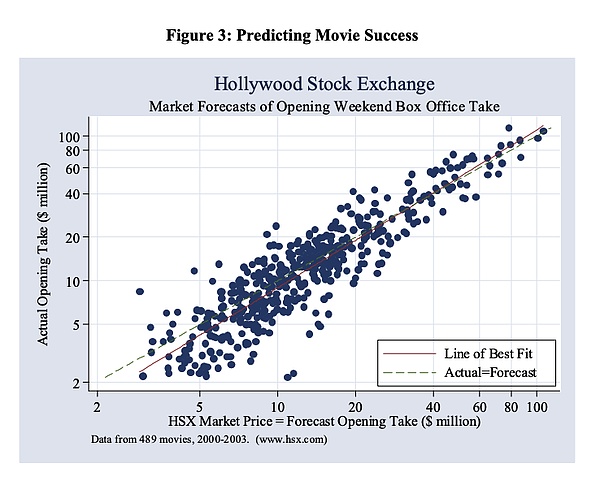
Theoretical Foundation and Market Mechanism Design
The basic mechanism of prediction markets lies in creating an incentive-compatible structure that motivates market participants to reveal their true information. Since traders are betting with real money (or virtual currency), they tend to trade based on their true beliefs and private information.
From an economic perspective, a well-designed market should allow traders to maximize their expected returns by quoting prices that align with their subjective probabilities.
In terms of preventing manipulation, academic research has found that prediction markets are quite resilient to price manipulation. Attempts to deviate prices from fundamentals typically create arbitrage opportunities for other more rational traders, who will choose to trade on the opposite side, thereby pulling prices back to a more reasonable position. Empirical data shows that manipulative behavior is often quickly corrected and can even help enhance market liquidity. In other words, those who attempt to manipulate the market often end up becoming "the subsidized" for smart traders, and market prices will ultimately reflect the true state of information.
Kalshi
Kalshi is a federally regulated prediction market exchange where users can trade on the outcomes of real-world events. It is the first exchange approved by the U.S. Commodity Futures Trading Commission (CFTC) to offer Event Contracts. Event Contracts are binary futures (yes/no), where if the event occurs, the contract is worth $1; if it does not occur, it is worth $0.
Users can buy or sell "Yes" / "No" contracts priced between $0.01 and $0.99, with the price representing the market's implied expectation of the probability of the event occurring.
If the prediction is correct, the contract settles at $1, allowing traders to profit. Kalshi itself does not hold positions (unlike gambling sites, it does not act as a bookmaker); it merely serves as a matching platform for buyers and sellers, profiting from trading fees.
Market Creation Process
Proposal and Approval
New event markets (yes/no binary contracts) can be proposed by the Kalshi team or users through "Kalshi Ideas." Each proposal must undergo internal review and meet CFTC regulatory standards, including clear event definitions, objective settlement conditions, and permissible event categories.
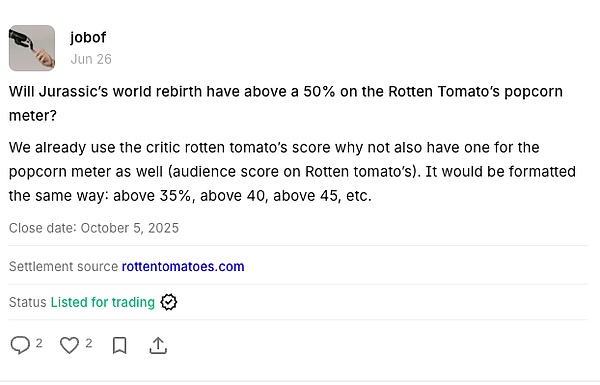

Contract Certification
Once approved, the event officially launches under Kalshi's Designated Contract Market (DCM) framework, with documentation outlining contract specifications, trading rules, and settlement standards.
Trading Launch
After the event market goes live, U.S. users can trade through Kalshi's app, website, or integrated platforms with brokers like Robinhood and Webull.
Initial Liquidity and Pricing
Order Book Mechanism
When a new market starts, the order book is empty, and any user (market maker or regular trader) can place limit orders (e.g., buy "Yes" at $0.39 or sell "No" at $0.61).
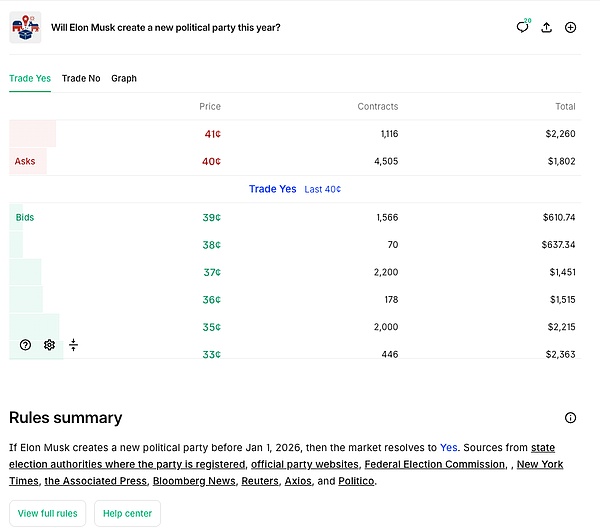
Market Maker Incentives
To encourage liquidity, makers typically pay no fees, although some specialty markets may charge very low fees.
Price Discovery
Prices change dynamically with supply and demand, reflecting the market's consensus on the probability of the event. For example, if someone buys "Yes" at $0.60 and another sells "No" at $0.40, the system matches them, creating a contract where both parties contribute $0.60 and $0.40, totaling $1.
Market Settlement Mechanism
Result Confirmation
The event result is determined based on pre-designated authoritative data sources (such as government reports or official sports results).
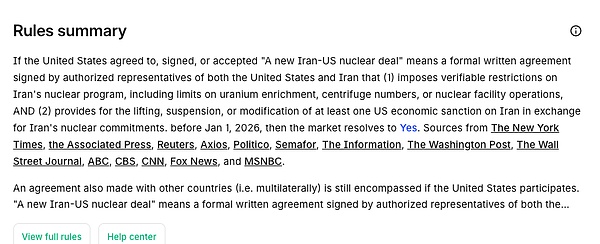
Automatic Settlement
If the event occurs, users holding "Yes" contracts automatically receive a profit of $1 per contract; conversely, if "No" wins, the losing party's contracts become worthless. No additional settlement fees.

Fee Structure
Set: P = contract price, C = contract quantity


Polymarket

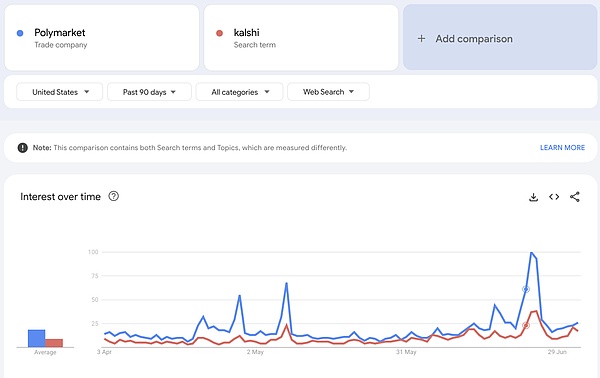
Polymarket Overview: Polymarket is a distributed prediction market platform built on Polygon, where users can trade binary outcome tokens (Yes/No Tokens) corresponding to event results. It employs a Conditional Token Framework (CTF), ensuring that each pair of outcome tokens is fully collateralized with stablecoin (USDC), and the trading mechanism uses a hybrid centralized limit order book (CLOB) for high-efficiency matching. Market settlement is completed through UMA's Optimistic Oracle, a dispute-resilient decentralized resolution system.
Conditional Token Framework (CTF) and Outcome Tokens
Polymarket uses Gnosis's Conditional Token Framework to represent each market outcome as a conditional token, deployed on the Polygon chain. For a binary market, two ERC-1155 Tokens are generated, such as Yes Token and No Token, with the same amount of USDC as collateral.

Splitting 1 USDC will generate 1 Yes + 1 No Token, and merging Yes/No Tokens will unlock a return of 1 USDC, ensuring that each pair of tokens is fully collateralized. When the event concludes, only the token corresponding to the correct outcome is worth $1, while the token for the incorrect outcome becomes worthless.
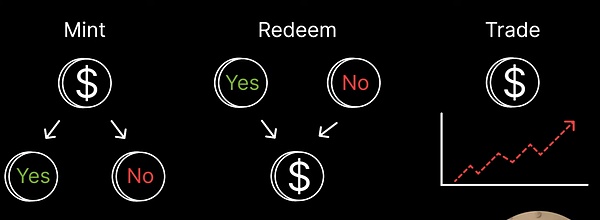
Hybrid Order Book Architecture (CLOB/BLOB)
Polymarket employs a hybrid architecture called Binary Limit Order Book (BLOB), which integrates offline order management with on-chain trading. Users sign orders offline, and operational nodes search for matching orders; if a match is found, the economic exchange is completed on-chain via smart contracts.
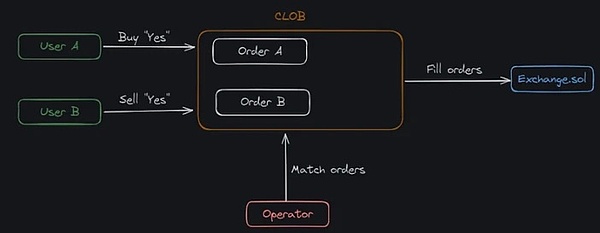
Order Lifecycle
Users sign EIP-712 orders off-chain (e.g., Buy YES @$0.62)
Operational nodes maintain the offline order book
When a matching order is found, the operational node submits the match result to the Exchange.sol contract
An atomic swap is executed on-chain to complete the settlement
Atomic Swap Examples
Buy vs Sell: One person buys Yes at $0.40, while another sells Yes at $0.40, with the contract facilitating the exchange of USDC and Yes tokens.
Buy vs Buy: Two people mutually buy Yes/No, with the contract extracting a total of $1 from both parties, splitting it into Yes/No tokens for the two users.
Sell vs Sell: Two people simultaneously sell Yes/No, merging tokens to return the collateral.
Supports partial fills, multi-order matching, price deductions, integrated transactions, and completes atomic execution.
UMA Optimistic Oracle
Unlike traditional exchanges that use internal adjudication or data sources, Polymarket forms consensus through the UMA Optimistic Oracle via the community.
- After the event concludes, anyone can submit a result reveal (proposal) for this market and stake a deposit, entering a dispute period.
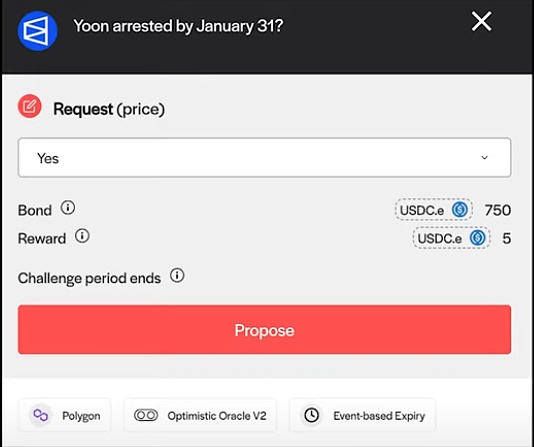
- If there is no dispute, the result is accepted; if there is a dispute, it is resolved through community voting via UMA.
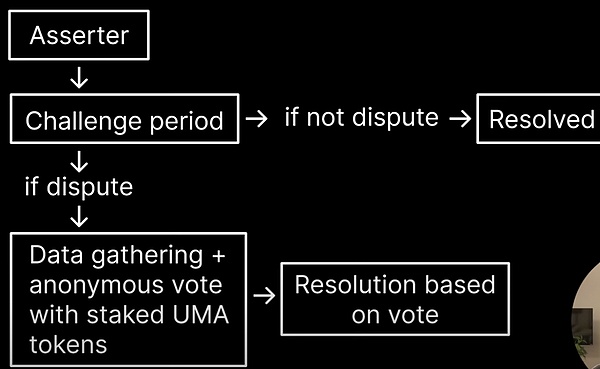
Kalshi vs Polymarket: Structural and Technical Comparison
In June, Polymarket's total platform trading volume (including political, technology, entertainment markets, etc.) was $1.16 billion, slightly higher than Kalshi's approximately $800 million.


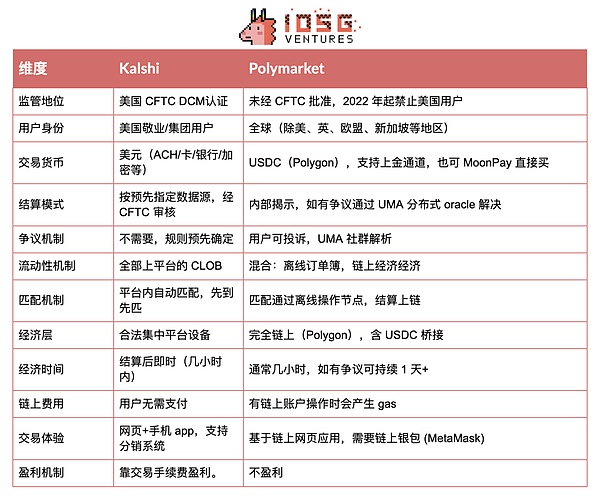
Market Expansion Strategy / Growth Momentum
Academic Insight: "Gambling Tendencies of Crypto Tokens"
A recent peer-reviewed study titled "Gambling on Crypto Tokens?" provides strong evidence of a correlation between crypto assets and gambling behavior. Researchers used Google Trends to proxy retail investor attention, revealing several significant patterns:
Per Capita Lottery Sales Predict Attention to Crypto Tokens
The Google Search Volume Index (SVI{i,d}) represents the attention received by a specific Initial Coin Offering (ICO) or NFT project i at the time of its release within a specific market area (DMA) d. The key coefficient β₁ in the regression model measures the impact of gambling tendencies in that area on attention to crypto assets. f(Xd) represents regional control variables that may influence attention to ICOs or NFTs.
The main explanatory variable in the model X_d is: per capita lottery sales, including interaction terms with token characteristics.

The regression results show that areas in the U.S. with higher per capita lottery sales (DMA) exhibit significantly higher Google search activity in the following areas:
- Initial Coin Offerings (ICO): The regression coefficient ranges from 6.28 to 6.88, with a p-value of 0.01, statistically significant.
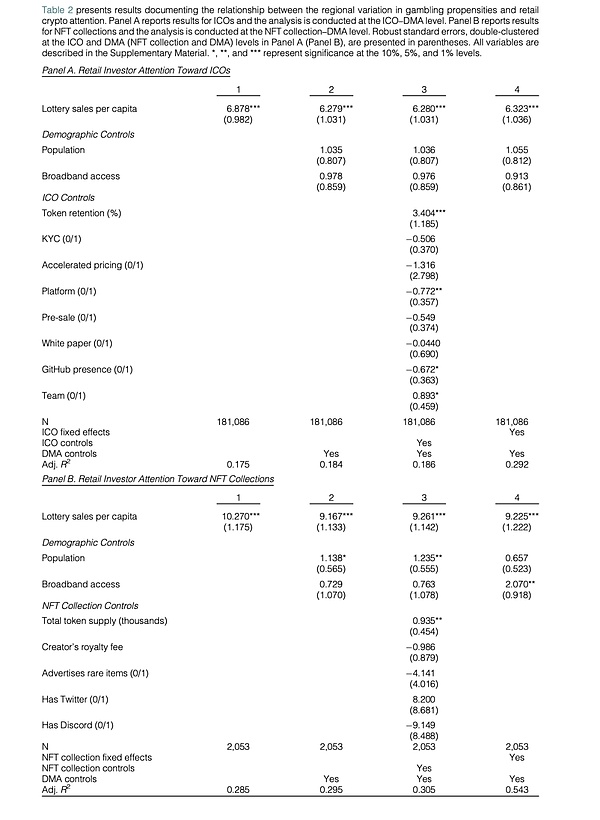
This indicates a high behavioral overlap between gamblers and retail crypto investors.
Wallet Attention and Investment Outcomes
- In areas with higher per capita lottery sales, wallet activity rapidly increases after the release of an ICO or NFT.

During the ICO/NFT release period, wallet-related search volume (Wallet SVI) (e.g., MetaMask, Coinbase Wallet, etc.) surges more noticeably in high lottery sales areas.
These areas also show higher funding amounts, more participants, and faster NFT minting speeds.
Legalization of Gambling as a Natural Experiment
Table 7 of the paper utilizes the temporal differences in sports betting legalization across U.S. states as a natural experiment. The results show that when gambling becomes legal in a state, in high lottery sales areas, attention to crypto-related topics significantly declines:

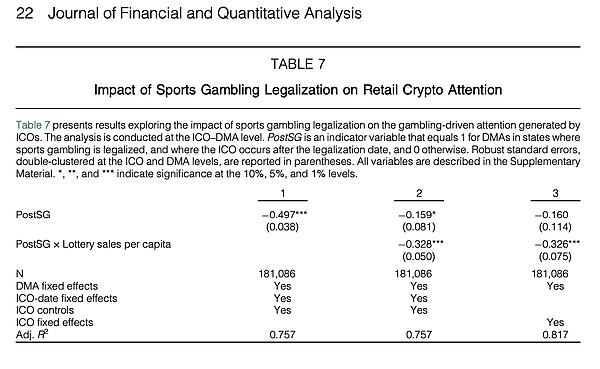
- The interaction term in the regression model (PostSG × lottery sales) shows a strong negative relationship and is highly significant.
This implies that there is a "substitution effect" between crypto tokens and gambling behavior—once legal gambling avenues emerge, speculative interest in crypto assets declines.
The conclusion of the entire paper is very clear: "Gambling preferences can strongly predict retail investors' interest in the crypto market."
Crypto trading is not just "like gambling"; for some users, it is gambling.
These research findings further validate the comparison between the two and highlight the existence of such users: they possess high-risk preferences and chase speculative thrills on platforms like casinos or Coinbase.
Crypto Gambling Market: Stake.com as a Representative Sample
To measure market size, one can refer to the rise of crypto-native gambling platforms (supporting only cryptocurrency deposits) like Stake.com.

In just a few years, Stake has captured the global demand for high-risk, high-reward entertainment, achieving explosive growth:
Impressive Revenue Scale: Stake achieved approximately $2.6 billion in gross gaming revenue in 2022 (up from just $105 million in 2020), ranking among the largest gambling companies globally. Growth continues — Stake's revenue in 2024 has reached approximately $4.7 billion, an increase of about 80% compared to 2022. In comparison, traditional giants Entain is projected to have revenue of around $5 billion in 2024, while Flutter reaches about $14 billion, placing Stake in the same league.
User Scale and Coverage: As of 2023, the platform has over 600,000 active users, despite being blocked in markets like the U.S. and the U.K. Its users are primarily concentrated in regions with lenient online gambling regulations, such as Southeast Asia, Japan, and Brazil. Hundreds of thousands of users worldwide are bypassing geographical restrictions to flock to a crypto gambling platform, reflecting the immense suppressed demand in the market.
Global Leading Player: Stake's explosive growth has made it the seventh largest gambling company in the world (by revenue), even surpassing many traditional sports betting companies. Notably, the revenue of the well-known U.S. betting platform DraftKings has fallen behind Stake, indicating that the cryptocurrency-driven gambling model is opening up a new market (TAM) that traditional gambling companies find hard to reach.
Why Prediction Markets Have an Advantage Over Traditional Gambling Companies:
Tradeable During Events (Early Payouts/Profit Taking)
Similar to Kalshi, prediction markets allow users to buy or sell positions before an event concludes, locking in profits or losses early (similar to the "Quick Payout" feature of the Hong Kong Jockey Club), providing the following advantages:
Actively hedge risks amid uncertainty
Dynamically adjust portfolios
Make speculative decisions more flexibly
Traditional Gambling Companies (Stake, Bet365, etc.)
While some modern gambling companies also offer early settlement features, they have the following limitations:
Control lies with the gambling company, leaving users with little agency
Potential for price slippage or fees
Overall Industry Scale
Stake is just one representative of the crypto gambling market. According to industry reports, the total gaming revenue of crypto casinos is expected to exceed $81 billion in 2024, and even with tightening regulations in many countries, growth remains unstoppable.
This figure represents the gross revenue generated from betting with cryptocurrencies, indicating that the intersection of "crypto × gambling" has formed an extremely large pool of users and funds, which currently flows mainly to offshore or unregulated platforms.
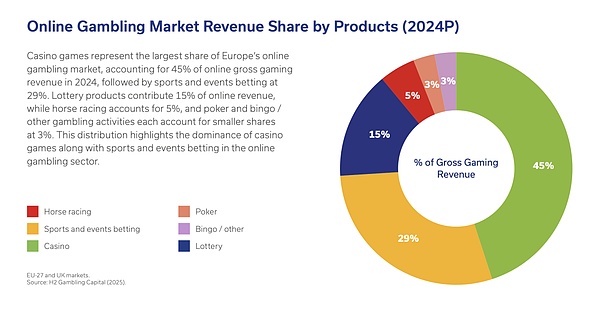
The success of Stake.com clearly demonstrates:
There is a huge market group that:
Is accustomed to using cryptocurrencies for transactions;
Enjoys speculation and high-volatility events;
Desires to participate in "betting" outside traditional channels.
These individuals essentially constitute the core user group of prediction markets, but they are currently concentrated on non-regulated platforms like Stake.
A regulated exchange, such as Kalshi, with its well-structured market and compliance oversight, is expected to attract a portion of this user group while providing a compliant stimulating experience. The scale of Stake's growth indicates that if these users migrate to legal platforms, the annual total addressable market (TAM) for "crypto-flavored" gambling activities in the U.S. could reach billions of dollars.
User Overlap: Demographic and Behavioral Consistency
This is not just a theoretical overlap; multiple studies and surveys have confirmed that crypto traders and gamblers share high overlap in key demographic and behavioral characteristics.
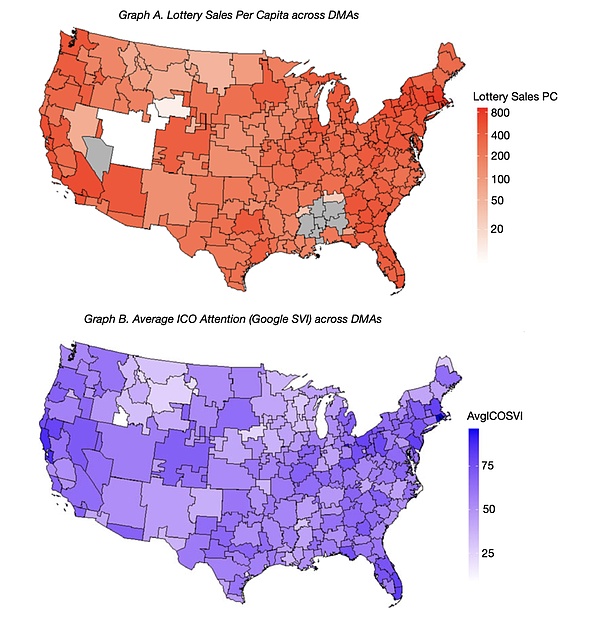
In many cases, they are the same type of person, or even the same individual. Several prominent overlap points include:
Young, Male, Risk-Seeking: Both crypto asset trading and sports/casino betting tend to skew towards young adult males, who generally have a high risk tolerance. They chase high-volatility assets and large returns. A study from Rutgers University found that over 50% of monthly gamblers had traded cryptocurrencies in the past year; over 75% of high-risk stock traders also engaged in crypto trading. Researchers noted, "Crypto trading is highly attractive to those who struggle to control their gambling behavior." In other words, a typical Robinhood crypto day trader (young, thrill-seeking, intuitively buying meme coins) is highly similar to a sports bettor or poker player chasing wins.
Always Online: The crypto market operates 24/7, continuously around the globe; online gambling can also be participated in at any time, providing a constant dopamine stimulus. Many who have transitioned from gambling to crypto trading report being attracted by the ability to "trade anytime," especially on weekends or late at night. For high-frequency internet users with impulsive tendencies, both crypto and gambling offer non-stop stimulation — there is always a game to bet on, and always a cryptocurrency fluctuating in value.
Thus, the target audience that Kalshi can lock onto is precisely those enthusiastic speculators who span both the crypto trading community and the gambling community. These users are already engaging in similar behaviors; the key is to provide a product that offers a similar stimulating experience within a compliant and secure framework. The overlap in behavior also indicates that Kalshi's marketing should emphasize the thrill of prediction markets (appealing to gamblers) while also highlighting its financial and rational trading attributes (appealing to investors' self-awareness).
Evolution of the Crypto Narrative: Moving Towards Compliance
In recent years, the overall narrative of the crypto industry has undergone a significant shift, moving from "unregulated" free innovation to institutionally-led, regulatory compliance. This transition has created a favorable competitive environment for regulated platforms like Kalshi and highlighted the strategic value of its regulatory moat (CFTC approval).
Aligning with Traditional Institutions: The current trend is that large traditional financial institutions and governments are beginning to actively participate in the crypto industry, bringing credibility and standards. For example, in 2023, the world's largest asset management company, BlackRock, applied for a Bitcoin ETF, sparking optimism in the market regarding the SEC's potential approval of a spot ETF. In June 2025, the U.S. Senate also passed the Stablecoin Regulatory Act (GENIUS Act), establishing federal-level crypto regulations. On a geopolitical level, former U.S. President Trump's team has also proposed crypto-friendly policies such as a "National Bitcoin Reserve." All these signs indicate that crypto is no longer on the fringes but is being integrated into the compliant and mainstream financial system.
Compliance as a Moat: In this new environment, compliance is competitiveness. The industry has shifted from "rapid trial and error" to "compliance and stability." Kalshi spent six years obtaining CFTC approval to become a nationally compliant exchange (Designated Contract Market, DCM), legally offering event contract trading in all 50 states, even in states like California or Texas where sports betting is prohibited. This qualification is extremely difficult to replicate. In contrast, Kalshi's crypto-native competitor Polymarket remains in a regulatory gray area, unable to operate legally in the U.S. and vulnerable to policy crackdowns. In the current trend of "institutionalized crypto," Kalshi's federal compliance status itself is a selling point, bringing trust, legal clarity, and nationwide access, which is the direction of industry development. In short, Kalshi is ahead in the compliance race, while other platforms are still striving to catch up.
Kalshi's Strategy: Positioning as "Trading" Rather than "Gambling" + Robinhood Distribution Channel
Kalshi is very cautious in its brand positioning, deliberately avoiding the "gambling" label, instead shaping itself as a new type of trading platform: providing "event contracts" as an investment tool and possessing the qualifications of a regulated exchange. This strategy is highly forward-looking:
"We are not a gambling company" — The Difference in Language and Model: Kalshi's founders and executives repeatedly emphasize that the platform is a matching exchange, not a bookmaker. Unlike gambling companies that take bets and profit from users losing, Kalshi only facilitates orders and charges a fee (similar to stock trading commissions). A Kalshi representative stated, "We are just an exchange… we don't make money off others winning or losing."
CEO Tarek Mansour further questioned, "If we are considered gambling, then the entire financial market should be considered gambling."
This statement encapsulates Kalshi's positioning logic: viewing event contracts as financial derivatives, such as buying a contract on "whether July will set a historical high temperature," is akin to buying crude oil futures or earnings options, rather than rolling dice. This linguistic transformation strategy is highly effective, not only optimizing regulatory perception but also making users more willing to see it as "investment" rather than "betting."
Integration with Robinhood: In early 2025, Kalshi announced a partnership with Robinhood. Robinhood has over 15 million active users and is a hub for young retail traders. This collaboration enabled the launch of a "Prediction Markets" feature within Robinhood, allowing users to trade event contracts provided by Kalshi (such as economic data predictions or even sports outcomes) directly in the app. This significantly enhanced Kalshi's reach. Robinhood's stock price even rose by about 8% due to this integration, with investors optimistic about its value potential. By embedding itself within Robinhood's ecosystem, Kalshi avoided high user acquisition costs, naturally integrating prediction markets into users' existing asset classes (stocks, options, crypto), normalizing the product.
Avoiding "Gambling": Kalshi deliberately avoids the term "gambling" in its market promotion and media materials. For example, it refers to contracts as "Yes/No Contracts," and its blogs and educational materials emphasize their predictive function and informational value rather than gambling stimulation.
Even in its collaboration with Robinhood, the promotional language focuses on "bringing event trading to the masses," avoiding any gambling terminology. This clever branding strategy serves to address regulatory concerns and to dispel users' stigma around gambling. By packaging prediction markets as a "trading experience," Kalshi attracts a broader user base — including those who enjoy speculation but wish to consider themselves as engaging in "rational investment."

The line between gambling and trading has always been blurred. As a student of quantitative finance, we are often taught that market fluctuations are random walks, akin to Brownian motion. But this raises a question: if trading is driven by volatility, speculative psychology, and emotions, is it really different from gambling? If you bet on a high-risk event with a positive expected value, is that still considered gambling? According to the "Gambler’s Ruin" theory, a gambler who continuously increases their bets but does not reduce their stake when losing, even if each bet has a positive expectation, will eventually go bankrupt. So, are we all "high-level gamblers"?
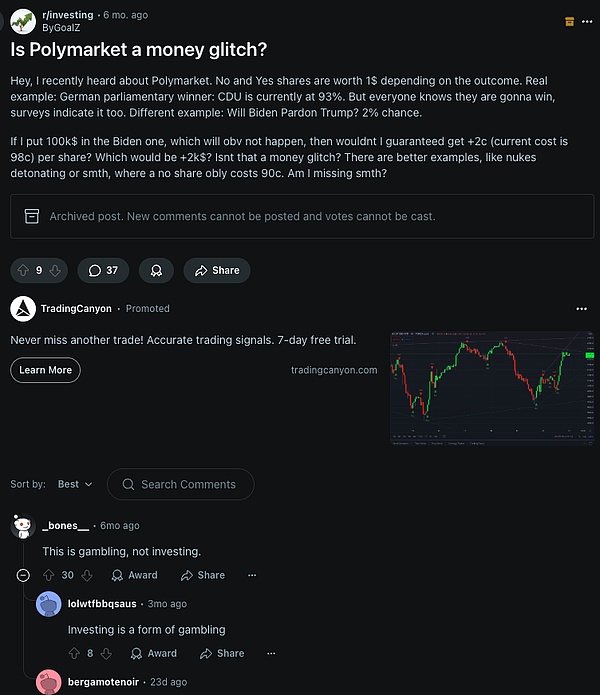
The data is clear: crypto retail traders and gamblers are not only similar; they are often the same group of people.
Kalshi does not need to choose between these two types of users; it can serve both simultaneously. Whether it’s "smart traders" executing arbitrage strategies or "entertainment players" predicting sports outcomes, Kalshi provides a regulated, legal market environment that allows these behaviors to coexist.
By abstracting the label of "gambling" and embracing the language of "markets," Kalshi is connecting two large user groups: those who want to play and those who want to trade. In this process, it does not sacrifice either side but rather reinforces the identity and behavioral value of both.
免责声明:本文章仅代表作者个人观点,不代表本平台的立场和观点。本文章仅供信息分享,不构成对任何人的任何投资建议。用户与作者之间的任何争议,与本平台无关。如网页中刊载的文章或图片涉及侵权,请提供相关的权利证明和身份证明发送邮件到support@aicoin.com,本平台相关工作人员将会进行核查。




